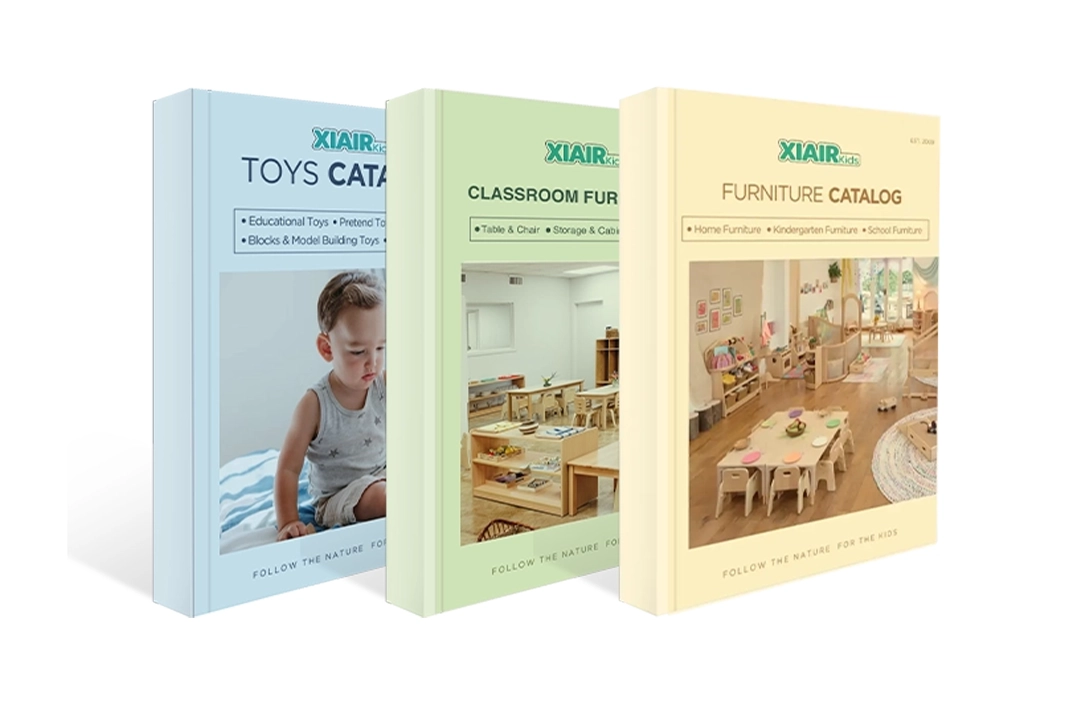Does managing a preschool classroom sometimes feel overwhelming? Clear and consistent rules can transform your classroom into a harmonious learning environment. The early years are crucial for building lifelong learning and development. Establishing clear and consistent rules can create an environment where children feel safe, respected, and ready to learn. Preschool classroom rules guide young children’s behavior and create a structured space conducive to learning. These rules are not just about maintaining order; they play a significant role in the overall development of preschoolers.
Setting up rules in a preschool environment is crucial for promoting independence, safety, self-regulation, and better learning outcomes. These rules help create a structured environment where young children can thrive. Preschool classroom rules provide children with a clear understanding of what is expected of them, helping to foster a sense of security and predictability. When children know the boundaries, they are more likely to feel comfortable and confident in exploring their surroundings and engaging in learning activities.
Interested in how these rules can benefit your classroom? Read on. Preschool classroom rules are essential for teaching children about responsibility and consequences. They learn that their actions affect themselves and others, a critical aspect of developing empathy and social skills. By consistently following rules, children learn the importance of discipline and the value of cooperation and respect for others.

What Are Preschool Classroom Rules?
Preschool classroom rules are guidelines designed to manage young children’s behavior and activities in a classroom setting. These rules are crucial for creating a structured, safe, and conducive learning environment. Preschool classroom rules outline acceptable behaviors and set clear expectations, helping children understand the boundaries they can explore and learn. By establishing and enforcing these rules, educators can ensure that children feel secure, respected, and ready to engage in learning activities. These rules cover various aspects of classroom life, including safety, respect for others, sharing, and cooperation.
Preschool classroom rules help children learn about boundaries, fostering a sense of security and predictability. Knowing the rules helps children feel more comfortable and confident in their environment, allowing them to focus on learning and exploration. Clear rules also promote fairness and equality, ensuring every child knows what is expected of them and what they can expect from others.
Preschool classroom rules are helpful for all young children, but it’s important to remember that not all kids are at the same stage of development. Two- and five-year-olds may be in the same classroom but understand rules differently.
Younger children, especially those under three, learn best when simple rules are illustrated with actions or pictures. For example, instead of saying “be respectful,” teachers might say “use gentle hands” or “walk inside” and show what that looks like.
Around four to five years old, older preschoolers understand why rules matter. They can discuss fairness, taking turns, and how their actions affect others. At this age, it helps to explain the reason behind the rules so they feel more involved and willing to follow them.
Since preschool classrooms often include children of different ages, using a mix of short phrases, pictures, songs, and gentle reminders is a good idea. That way, all kids can understand the preschool classroom rules in a way that makes sense.
Importance of Setting Up Rules in a Preschool Environment
Setting up rules in a preschool environment is critical for several reasons:
Promotes Independence and Critical Thinking: Preschool classroom rules encourage children to make decisions and think critically about their actions. Children learn to navigate their environment independently by understanding and following rules, fostering self-confidence and problem-solving skills. Independence is essential for young children as it helps them develop a strong sense of self and the ability to make choices. Critical thinking, nurtured through decision-making within the boundaries of rules, prepares children for future challenges.


Promotes Safety: Clear preschool classroom rules help children understand what behaviors are safe and which are not, reducing the risk of accidents and injuries. For example, rules about walking instead of running inside the classroom help maintain a secure environment. Safety rules also include guidelines for adequately using classroom materials and equipment, understanding personal space, and knowing emergency procedures. By adhering to these rules, children learn to create a safe environment for themselves and their peers, reducing the likelihood of accidents and promoting a sense of security.
Promotes Self-Regulation and Empathy: Preschool classroom rules teach children to manage their emotions and behaviors. They also help children understand the impact of their actions on others, fostering empathy and social skills. Rules about sharing and taking turns, for instance, teach children to consider the feelings and needs of their peers. Self-regulation involves controlling impulses, managing emotions, and behaving in socially acceptable ways, which are crucial for success in school and life. Empathy, developed through understanding the consequences of one’s actions on others, is fundamental in building positive relationships and a supportive classroom community.


Improves Learning Outcomes: A structured environment with clear preschool classroom rules helps children focus on learning activities, leading to better engagement and improved academic performance. When children know what is expected of them, they can concentrate more effectively on exploring, discovering, and learning new concepts. Consistent rules minimize disruptions, allowing for more effective teaching and learning time. By providing a predictable environment, rules help children feel secure, which enhances their ability to engage fully in learning activities. Improved learning outcomes are achieved when children can focus on educational tasks without being distracted by uncertainty or misbehavior.
What Do You Need to Consider When Developing Rules for a Preschool Classroom?
Several critical factors must be considered when developing preschool classroom rules to ensure that the rules are effective, inclusive, and conducive to a positive learning environment. Preschool classroom rules play a pivotal role in shaping the behavior and interactions of young children, providing a structured framework that supports their growth and development. Creating preschool classroom rules isn’t just about writing and posting a list on the wall. Effective rules consider more than just behavior—they reflect developmental needs, classroom dynamics, cultural context, and learning styles. Here are some essential considerations:
If you want to create a positive learning environment, please get in touch with us!
Your perfect classroom is one click away!
Differences Between Rules and Expectations
Understanding the distinction between rules and expectations is fundamental when creating preschool classroom rules. Rules are specific guidelines that dictate what behaviors are acceptable and what are not. They are clear, concise, and enforceable. For instance, a rule might be “Raise your hand to speak.” Expectations, on the other hand, are broader and describe the overall goals and values you want to instill in children. An example of an expectation could be “Respect others when they are talking.”
Effective preschool classroom rules are explicit and actionable, allowing children to understand exactly what is expected. Expectations provide a broader framework, helping children grasp the underlying principles behind the laws. Both rules and expectations are crucial, but they serve different purposes. Rules provide clear behavioral guidelines, while expectations help foster a positive and respectful classroom culture.
Communicating the regulations and expectations is essential in developing preschool classroom rules. Children should understand what they need to do and why it is necessary. This understanding helps them internalize the rules and see them as part of a larger context of mutual respect and cooperation.
Learning Styles and Developmental Levels
Not all children learn in the same way. Some are visual learners, while others learn best through movement or song. Rules that are only written on a board may not reach every child. Effective rule design should include:
- Pictures for non-readers or ELL students
- Songs to support auditory learners
- Gestures or routines for kinesthetic learners
- Role-play to support social learners
Also, children at different developmental stages need various kinds of explanations. A 3-year-old might need a rule shown, while a 5-year-old may benefit from a short discussion about why it matters.
Consistency with Home Expectations
Children are more likely to adopt when school rules echo some of the values already in place at home. Teachers should aim for language continuity—using phrases like “kind hands” or “listening ears” at school and in parent communication.
If a rule might feel unfamiliar at home, like “we all clean up together,” it helps to explain why it’s part of the classroom structure. Providing context makes it easier for parents to support the rules at home.
Emotional Tone and Language Choice
The way a rule is worded can affect how it’s received. Positive rules (e.g., “Use quiet voices”) tend to work better than negative phrasing (“Don’t yell”). Keeping rules short, positive, and framed around what the child can do increases clarity and cooperation.
Using consistent phrasing across the teaching team and over time helps children feel safe. Preschool classroom rules should set limits and offer children a sense of structure, predictability, and belonging.
Children’s Cultural Backgrounds
Considering children’s cultural backgrounds is essential when developing preschool classroom rules. Cultural values shape how children view behavior, authority, and communication. A rule that feels normal in one culture—like speaking without raising hands—might feel unfamiliar or restrictive in another. That’s why rules should be inclusive and respectful of these differences, helping all children feel safe and understood.
But culture is only part of the picture. Language and communication differences also affect how children process and follow rules, especially in classrooms with English Language Learners (ELLs). These children may understand behavior expectations better through visual supports like icons, classroom rules posters, or role-play rather than just spoken language.
To make preschool classroom rules more accessible:
- Use simple, consistent wording (e.g., “kind hands,” “listening ears”)
- Include pictures or gestures to support comprehension
- Reinforce expectations with songs, routines, and positive reinforcement
Teachers should also involve parents and caregivers early in the rule-setting process. By inviting families to review and discuss the classroom rules, educators can gain insight into cultural practices and create laws that reflect shared values. Children receive a more unified and consistent message when parents understand and support the rules at home.
Ultimately, rules that reflect cultural respect and language inclusivity help children feel like they belong. They also teach children early on that differences are not just accepted—they are part of the learning experience.


State and Local Early Education Laws
Compliance with state and local early education laws is essential when developing preschool classroom rules. These laws often provide guidelines on health and safety standards, teacher-to-child ratios, and educational practices. Ensuring your rules align with these regulations helps maintain a safe and legally compliant classroom environment.
Preschool classroom rules should also consider any specific requirements or recommendations from educational authorities. This might include guidelines on behavior management, inclusivity, and accessibility. By adhering to these laws, educators can ensure that their classrooms are safe and supportive places for all children.
It is also essential to regularly review and update preschool classroom rules to reflect changes in laws and regulations. This proactive approach helps maintain a compliant and effective classroom environment. Additionally, staying informed about best practices in early childhood education can provide valuable insights for refining and improving classroom rules.
How to Create Classroom Rules for Preschool
Creating preschool classroom rules is not just a task to check off—it’s a foundation for everything in the learning environment. How the rules are made, who’s involved, and how they’re introduced can all affect how well children understand and follow them.
Involve Families in the Rule-Making Process
Preschool classroom rules are more effective when they are supported at home. Before the school year begins, teachers can contact families and ask about the types of regulations children are already used to. A quick family survey or a parent-teacher orientation meeting can offer insight into what values families prioritize, such as kindness, cooperation, or safety.
This communication also gives families a voice. Children who see that their parents support the classroom rules are more likely to take them seriously. Teachers can even send home a copy of the final classroom rules poster so parents can use the same language at home.
Hold a Class Rule-Making Meeting
Involving children in the rule-creation process builds ownership and cooperation. When students help make the rules, they’re not just told what to do—they understand why they exist.
Teachers can guide this process by asking open-ended questions like:
- “What helps us learn together?”
- “What should we do to keep each other safe and happy?”
After the discussion, the class can vote or agree on a few essential rules. Children can draw pictures of each rule to make a visual rules poster. This sense of shared responsibility strengthens their connection to the classroom community.
Case in Point: “Our Rules” Not “The Rules”
In one preschool, a teacher used a storybook about helping others to start a class conversation. After reading, the children suggested ideas like “We use quiet voices” and “We help clean up.” The teacher listed their ideas using the children’s words and turned them into a five-rule list.
The result? The children were proud of “their” rules and helped remind each other of them throughout the year. When children help make the rules, they feel they’re not being controlled but respected.
How Many Rules Are Enough?
Too many rules overwhelm young children. Most experts suggest limiting the list to 3–5 clear and positive rules. Instead of saying “Don’t shout, don’t run, don’t grab,” it’s better to group behaviors under umbrella rules like:
- “Use kind words.”
- “Keep hands and feet to yourself.”
- “Take care of our space.”
Short, action-oriented rules are easier to remember and explain.
Include Different Types of Rules
A well-balanced rule set should go beyond basic behavior. It’s helpful to include rules that touch on:
- Behavior (“Be safe”)
- Social interaction (“Be kind”)
- Learning habits (“Be ready to learn”)
- Responsibility (“Take care of your things”)
This ensures that rules support both emotional and academic development.
Introduce Rules in Stages
Some teachers introduce one rule per day during the first week rather than listing all the rules on day one. This allows time for discussion, practice, and reflection.
For example:
- Monday: Introduce “Use listening ears”
- Tuesday: Practice “Be gentle” with hands and toys
- Wednesday: Add “Clean up when you’re done.”
Gradual introduction helps avoid overload and gives each rule the attention it needs.
Align Rules Among Teachers
Consistency is essential in classrooms with co-teachers or assistants. All staff should use the exact phrases, visuals, and reminders. Children thrive on repetition, and hearing the same message from every adult reinforces the rule.
For instance, if one teacher says, “Quiet voice,” and another says, “Indoor voice,” the child may be confused. A shared language among the adults makes rules more transparent and easier to follow.

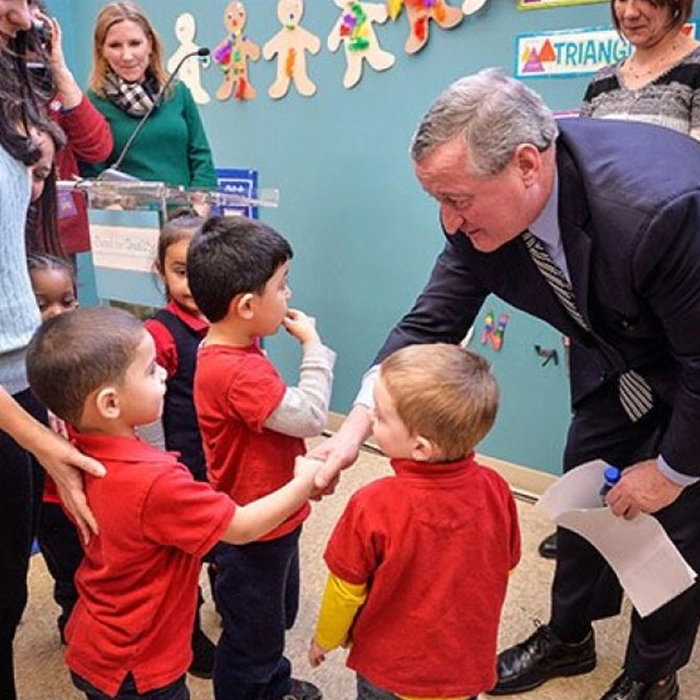
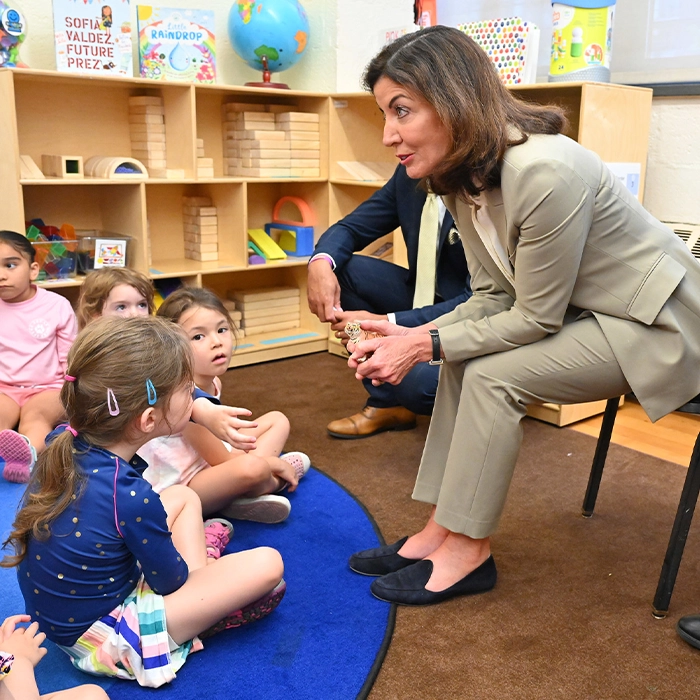
The 6 Most Important Aspects of Effective Classroom Rule Creation
Creating effective preschool classroom rules involves several vital aspects. These elements ensure that the rules are transparent, fair, and conducive to a positive learning environment. Here are the six most important aspects to consider:
- 1. Make Rules Clear: Clarity is vital when setting preschool classroom rules. Use simple words and visuals to explain each rule. When rules are clear, children understand precisely what is expected of them, which reduces confusion and helps them follow the rules consistently. For example, a rule like “Use your indoor voice” can be paired with a picture of a child speaking softly. This makes it easier for young children to understand and remember the rules. Consistent reminders and visual aids help reinforce these clear guidelines.
- 2. Be Consistent: Consistency is crucial. Apply the same rules to all children in all situations. When laws are enforced consistently, children learn that the rules are essential and must always be followed. This helps build trust and ensures that children know what to expect. All teachers and staff should enforce the rules in the same way. Regular meetings and training sessions can help ensure everyone is on the same page. Consistency helps children feel secure and makes the classroom environment predictable and safe.
- 3. Keep Rules Positive: Frame rules in a positive way. Instead of saying, “Don’t run,” say, “Walk inside.” Positive language encourages better behavior and creates a more supportive atmosphere. Favorable preschool classroom rules focus on what children should do, promoting a positive and proactive approach to behavior. For instance, saying “Use gentle hands” instead of “Don’t hit” helps children understand the desired behavior. Positive reinforcement, like praise and rewards, also encourages children to follow the rules and creates a positive classroom environment.
- 4. Make Rules Relevant: Rules should be relevant to the children’s everyday experiences. When rules relate to what children do daily, they are more meaningful and accessible. For example, a rule like “Clean up after playing” addresses an everyday activity and helps maintain order. Regularly review and update regulations to keep them relevant. Involving children in this process can also make rules more meaningful. Children who help create the rules are more likely to follow them.
- 5. Keep Rules Age-Appropriate: Ensure rules suit children’s age and development. Preschool classroom rules should be simple and easy for young children to understand. For example, a rule like “Use kind words” is appropriate for preschoolers and helps them learn to communicate respectfully. Adjust rules as needed to match the children’s developmental stages. What works for older children might not be suitable for younger ones. Age-appropriate rules ensure that expectations are realistic and achievable.
- 6. Involve the Children: Involving children in creating the rules gives them a sense of ownership. When children help make the rules, they understand them better and are likelier to follow them. This also teaches them about responsibility and the importance of rules in a community. Engage children by discussing why rules are necessary and asking for their input. Questions like “How can we ensure everyone is safe?” or “What rules do we need for playtime?” can help involve children in the rule-making process. This engagement makes rules more meaningful and effective.
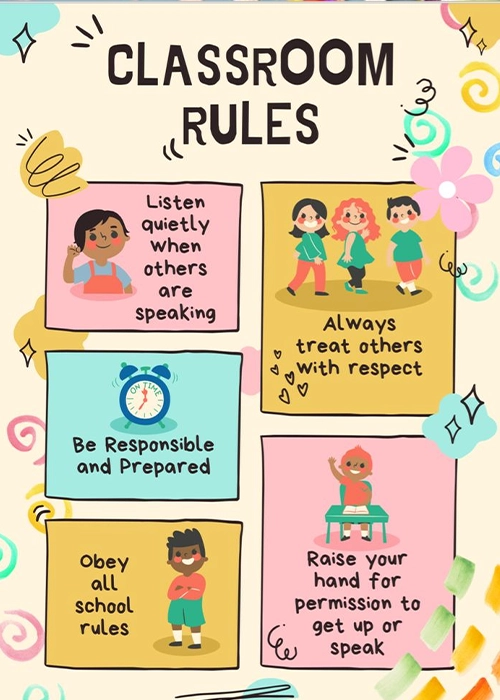

The 5 Essential Preschool Classroom Rules
Preschool classroom rules work best when they are short, easy to remember, and connected to daily routines. The “Big 5” system is a popular way to teach key values and behavior in a simple format that young children can follow.
1. Be Safe
This means walking indoors, using toys gently, and keeping hands and feet to yourself. Safety is the foundation for everything else. Teachers can show what “being safe” looks like through modeling and pictures, especially during transitions.
2. Be Kind
Saying “please,” sharing, and offering help to friends are all ways children show kindness. Teachers can praise and praise kind moments during the day, so kids learn through positive examples.
3. Be Respectful
This includes listening when someone else is talking, taking turns, and using materials carefully. Respect is a big idea, but with simple rules and reminders like “quiet voice” or “wait your turn,” children can practice it in daily actions.
4. Be Responsible
Putting away toys, throwing trash in the bin, or remembering your backpack all help build responsibility. Teachers often use cleanup songs or classroom jobs to encourage these habits.
5. Be Ready to Learn
Sitting on the carpet, eyes on the teacher, and open ears all show you’re ready. Teachers can reinforce this with routines like a “ready check” before starting a group activity.
These five preschool classroom rules are a great starting point for any classroom. They offer structure without overwhelming young learners. Using songs, hand signals, or visuals can make the rules part of the everyday rhythm, not just a poster on the wall.
What Are the 4 P’s of Classroom Rules?
The “4 P’s” classroom rules are another simple and effective way teachers introduce expectations to preschoolers. This system uses four short words that are easy to remember and cover key areas of behavior: Prompt, Polite, Prepared, and Positive. Each stands for a value that helps young children succeed socially and academically.
Prompt
Being prompt means following directions quickly and being on time during routines. In preschool, this could mean lining up when called, sitting down for circle time, or putting toys away when asked. Teachers can use gentle countdowns or songs to help children respond faster in a fun, low-pressure way.
Polite
Teaching politeness early helps children build social awareness. Saying “please” and “thank you,” using calm voices, and waiting for turns are basic but essential habits. Children learn these behaviors through repetition, role modeling, and consistent praise.
Prepared
Being prepared doesn’t mean children need to carry supplies—it means being ready to listen, learn, and join group activities. Teachers can build this habit by using signals like “Ready Hands” or “Show Me You’re Listening” before starting instructions.
Positive
Staying positive teaches children to manage frustration and solve problems with words instead of anger. This means using kind words, encouraging others, and trying again when something feels hard. Teachers can help by celebrating effort, not just outcomes.
Preschool classroom rules based on the 4 P‘s work well because they focus on mindset and behavior. While the “Big 5” are about what to do, the 4 P’s add another layer—how to approach learning and relationships. This structure helps young children build habits and attitudes that will serve them beyond preschool.
What Are the Three Golden Classroom Rules?
While some classrooms prefer longer lists or structured systems, many early childhood educators believe fewer, more explicit rules are easier for young children to remember and follow. This is where the idea of the “Three Golden Rules” comes in—a short, universal set of principles that can apply to nearly any preschool environment:
1. Respect Yourself
This means taking care of your body, making safe choices, and speaking up when something feels wrong. In preschool, respecting yourself can be taught by encouraging children to say “no” when needed, to wash their hands, and to choose safe play. It’s the first step in building self-awareness and confidence.
2. Respect Others
Preschool is often the first place children learn to share space with peers. Respecting others includes listening, sharing, using kind words, and keeping your hands to yourself. Teachers can model this daily and praise children when they treat others well, reinforcing the message through positive examples.
3. Respect the Environment
Children should learn to care for the classroom just like they care for their toys at home. Putting materials away, cleaning up after snacks, and using supplies gently are all ways to respect the space they learn in. This rule helps build responsibility and a sense of belonging.
These three rules are often used as a foundation to which all other classroom expectations can be linked. For example, if a child runs indoors, the teacher might say, “Let’s be safe—remember, we respect ourselves by walking inside.” When rules are tied to values, not just actions, children understand the “why” behind them.
Golden rules don’t just guide behavior—they also shape a preschooler’s character. They’re easy to repeat, display on posters, and teach with stories, songs, and pictures. Most importantly, they create a classroom culture of care, safety, and mutual respect.
What Are the 4 B’s Classroom Rules?
The 4 B’s system is popular in early childhood classrooms because of its clear structure, alliteration, and simplicity. Each “B” represents a behavior or mindset that helps create a safe, respectful, and productive learning environment. Many teachers use this method alongside visual charts or hand signals to help preschoolers remember the rules.
1. Be Safe
This rule reminds children to keep their bodies and others safe. It includes walking indoors, using toys correctly, and being careful with classroom materials. Teachers often reinforce this rule with examples like “use your walking feet” or “carry scissors carefully.”
2. Be Kind
Kindness is a key part of preschool classroom rules. It covers using polite words, including others in play, and helping friends. Teachers can help children notice kind actions in others and celebrate them as part of the daily routine.
3. Be Respectful
Respect means listening when someone is talking, waiting your turn, and carefully treating books and toys. This rule can be practiced through simple classroom jobs and group discussions about how we want others to treat us.
4. Be Ready to Learn
Children show they are ready to learn by looking at the teacher, sitting calmly during group time, and following directions. Visual cues and morning routines like “quiet hands” or “ready bodies” make this rule easier for preschoolers to understand.
Preschool classroom rules built around the 4 B’s are easy to introduce at the beginning of the year and can be revisited daily. Since the structure is consistent and easy to remember, even younger children can begin using the language of these rules when talking about their actions. This gives them a sense of ownership and helps them take part in building a positive classroom culture.
What Are Some Classroom Rules for Preschool?
Creating effective preschool classroom rules is essential for fostering a positive, safe, and productive learning environment. These rules help guide young children’s behavior and ensure that the classroom operates smoothly. Here are some critical preschool classroom rules and explanations of why they are essential and how they benefit teachers and students.
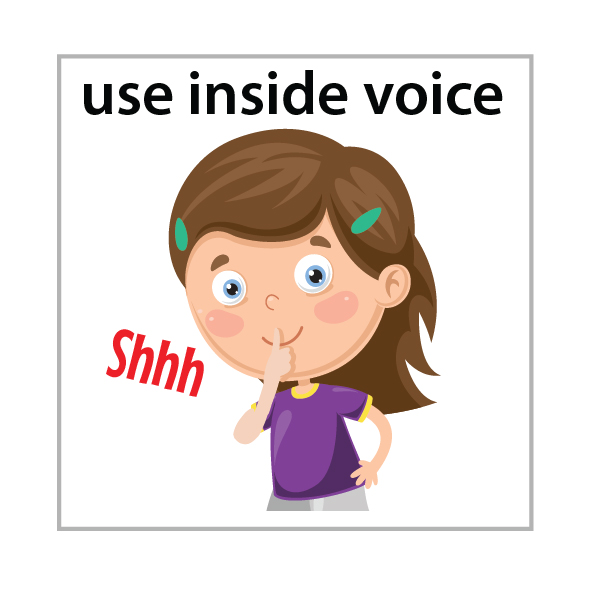
Use Your Indoor Voice
Using an indoor voice means speaking softly and not shouting. This rule helps maintain a calm and peaceful classroom environment. Preschoolers often get excited and might talk loudly, but using an indoor voice helps everyone hear instructions and reduces noise levels.
Follow Directions Quickly
When children follow directions quickly, classroom activities and transitions run more smoothly. This rule helps maximize learning time and minimizes disruptions. It also teaches children the importance of listening and responding promptly to instructions from the teacher.
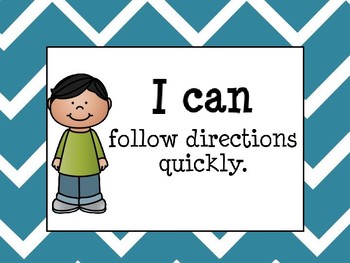

Be Kind and Respectful
Kindness and respect are fundamental values in any classroom. This rule encourages children to respect their peers and teachers, use polite language, and consider others’ feelings. It fosters a positive classroom culture where everyone feels valued and appreciated.
Raise Your Hand to Speak
Raising a hand before speaking helps manage classroom discussions and ensures everyone gets a turn to talk. It teaches children to wait for their turn and listen to others. This rule promotes orderly communication and helps children practice patience and self-control.


Clean Up After Yourself
Cleaning up after activities teaches responsibility and organization. This rule encourages children to take care of their environment and shows them the importance of tidiness. Whether it’s putting away toys or cleaning up art supplies, this rule helps maintain a neat and orderly classroom.
Walk, Don’t Run
Walking instead of running inside the classroom prevents accidents and injuries. This rule is vital for maintaining a safe environment. Children often get excited and may want to run, but walking ensures that they move around safely without causing harm to themselves or others.

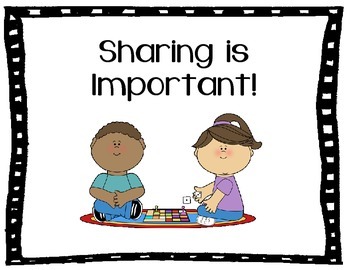
Sharing and Taking Turns
Sharing and taking turns are essential social skills. This rule helps children learn to cooperate and play fairly with their peers. It reduces conflicts over toys and activities and teaches children the value of generosity and patience.
Listen When Others Are Speaking
Listening attentively when others are speaking is a sign of respect. This rule helps children develop listening skills crucial for effective communication and learning. It ensures that everyone feels heard and understood in the classroom.


Keep the Classroom Clean
A clean classroom is a pleasant place to learn. This rule encourages children to take pride in their learning environment and work together to keep it clean. Tasks might include throwing away trash, wiping tables, and organizing materials.
How Do You Teach Classroom Rules to Kids?
Preschool classroom rules are only effective if children understand them. However, “understanding” looks different at age 2 than at age 5. Effective rule teaching must match children’s cognitive, emotional, and social development. Below is a breakdown of how to approach rule instruction based on age group.
Instruction by Age: What Works Best
| Age Group | Developmental Traits | Teaching Strategies |
|---|---|---|
| 2–3 Years | Short attention span, minimal verbal understanding, mostly sensory learners | Short attention span, minimal verbal understanding, predominantly sensory learners |
| 4–5 Years | Beginning to understand cause and effect, can follow multi-step directions | – Introduce the “why” behind each rule (e.g., safety, fairness) – Use role-play to explore right vs. wrong behaviors – Let children help create some classroom rules |
| 5+ Years | Developing empathy, logic, and group awareness | – Encourage self-regulation (“What rule should we use here?”) – Use peer feedback and discussion – Introduce basic consequences and accountability |
Teaching rules isn’t just about saying them—it’s about helping children internalize them through age-appropriate methods.
Reinforcement Through Song, Games, and Routines
Using music and movement helps make rules memorable. A short classroom rules song repeated daily during circle time becomes a natural reminder. Interactive games like “Who’s Following the Rule?” or “Rule Bingo” turn review into play.
Visual cues (like a classroom rules chart with pictures) help non-readers remember expectations. Morning routines can include pointing to the rule of the day and having children act it out.
Family Involvement Strengthens Result
Preschool classroom rules should not stay within the walls of the school. Children receive a unified message when parents know and use the same rule language—like “use your indoor voice” or “respect others’ space,” for example.
Teachers can send home printed rules or even involve parents in creating a home version of the rules chart. This collaboration makes it easier for the child to carry what they learn into every setting.
How to Enforce Classroom Rules
Preschool classroom rules only make a real difference when they are consistently enforced. Enforcement, however, doesn’t mean punishment. It means creating a system where children know what’s expected and what will happen if those expectations are not met—without fear or shame.
Enforcing preschool classroom rules is essential for maintaining a structured and effective learning environment. Here are some strategies to ensure that preschool classroom rules are followed consistently and positively:
- Explain Their Importance: One of the first steps in enforcing preschool classroom rules is to explain their importance to the children. Children who understand why rules exist are more likely to follow them. For example, you might explain that “keeping hands to ourselves” helps everyone feel safe and respected or that “using indoor voices” keeps the classroom calm and helps everyone hear instructions. Stories, examples, and role-playing can make these explanations more engaging and relatable. For instance, tell a story about a character who follows the rules and how it benefits everyone around them. Role-playing different scenarios can also help children understand the consequences of following or breaking the rules practically and memorably.
- Encourage Questions: Encouraging children to ask questions about preschool classroom rules helps ensure they understand and feel comfortable with them. Open discussions about the rules allow children to express concerns or confusion, fostering a more inclusive and interactive learning environment. Creating a safe and supportive space where children feel comfortable asking questions is crucial. When children understand the rules thoroughly, they are more likely to follow them and see them as fair and reasonable. This approach also helps children develop critical thinking and communication skills as they learn to articulate their thoughts and understandings about the rules.
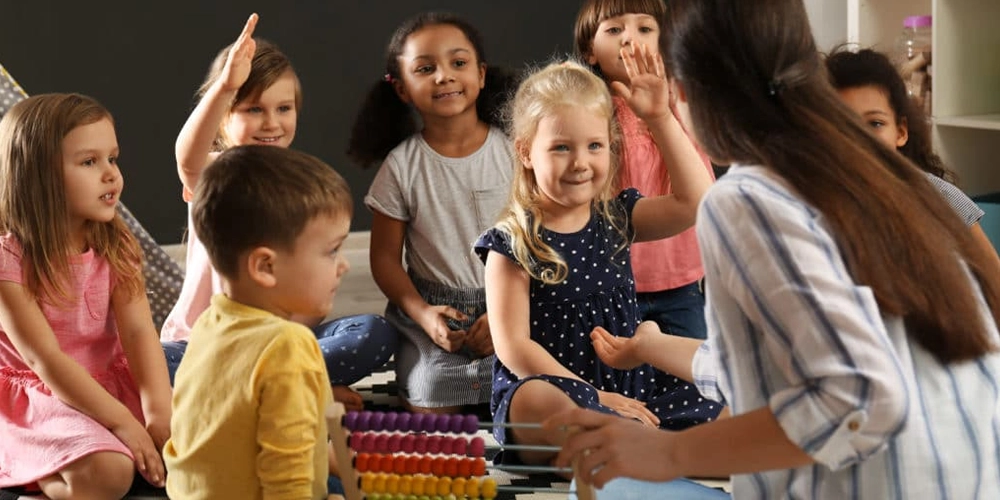
- Exercise Patience: Patience is critical as children learn and adapt to preschool classroom rules. They may need reminders and positive reinforcement to follow the rules consistently. Understanding that learning and following rules is a process helps educators provide the necessary support and encouragement. Consistent reminders and positive reinforcement help children develop good habits over time. It’s essential to address rule-breaking calmly and constructively, using it to reinforce the rules and explain why they matter. This approach helps children learn from their mistakes without feeling discouraged.
- Use Positive Reinforcement: Positive reinforcement is a powerful tool in enforcing preschool classroom rules. Rewarding good behavior with praise, stickers, or small rewards encourages children to continue following the rules. Positive reinforcement helps reinforce the importance of preschool classroom rules and motivates children to adhere to them. For instance, you might have a reward system where children earn stars or tokens for following the rules, which they can later exchange for small prizes. Verbal praise and recognition during class can also be highly effective. Acknowledging and celebrating good behavior creates a positive and encouraging atmosphere, making children feel appreciated and motivated to follow the rules.
Establishing a routine for reviewing the rules, such as during morning circle time, helps reinforce their importance and ensures they remain a consistent part of the daily routine
Set Clear, Predictable Consequences
Children need to understand the rules and what happens when they are followed—or not followed. The consequences should be:
- Immediate (occurs right after the behavior)
- Related (connected to the rule broken)
- Reasonable (proportionate to the child’s age and intent)
For example, if a child throws toys, a fair consequence might be temporarily losing access to the toy, followed by a reminder of the rule.
Use Positive Reinforcement
Positive behavior should be noticed as much, if not more, than negative behavior. When a child follows a rule, use clear praise:
- “You remembered to walk inside. That keeps everyone safe.”
- “Thanks for waiting your turn. That was kind.”
Reward systems like sticker charts or classroom “helper jobs” motivate children to keep following the rules, especially when the rewards are tied to effort and consistency rather than perfection.
Be Consistent Across Adults and Settings
One of the fastest ways to confuse children is when different adults have different standards. If one teacher ignores a broken rule while another enforces it strictly, the child won’t know what to expect.
Teachers, assistants, and even substitutes should be aligned on rule language, tone, and consequences. Consistency builds trust, and trust makes rule-following easier.
Redirect Rather Than Punish
At the preschool level, most misbehavior results from unmet needs or lack of understanding—not defiance. Instead of immediately removing privileges or using time-outs, try redirection:
- “You’re running indoors—can you show me how we walk with quiet feet?”
- “It looks like you’re upset. Let’s take a break and come back when you’re ready.”
This approach teaches self-awareness and allows children to make better choices without feeling labeled.
Create a Safe Space to Reflect
Creating a “cool-down” area can be helpful for frequent or more serious rule-breaking—not as a punishment space but as a reflection zone. Before rejoining the group, children can learn to self-regulate with soft pillows, calming visuals, and emotion cards.
Teachers can guide the child through a simple reflection:
- “What happened?”
- “What rule do we need to remember?”
- “What can we do next time?”
Over time, children begin to connect actions and outcomes without relying on external control.


How to Create Visual Representations of Rules for Preschoolers
Visual tools display expectations and serve as daily behavioral reminders for preschoolers. A highly effective method is creating a preschool classroom rules chart that uses actual photographs of children in that specific classroom following the rules. This approach makes the rules more relatable and personalized, especially for visual learners.
Another impactful strategy is using classroom rules coloring pages as a part of an art center activity. As children color images of proper behavior, such as sharing or using indoor voices, the rule becomes internalized in a non-verbal, creative way. These visuals can be hung on classroom walls or sent home to reinforce rules with parents.
Teachers can also introduce preschool classroom rules posters that incorporate symbols or emojis paired with simple text, especially in multilingual classrooms. The combination of images and minimal words ensures comprehension across language abilities. These visual representations work best when frequently referred to and integrated into classroom routines, not just posted once and forgotten.
Visual representations of preschool classroom rules make them more accessible for young children to understand and remember. Here are some effective methods:
Use Pictures and Symbols: Pictures and symbols help communicate rules quickly and clearly. For example, a picture of a child raising their hand can represent “Raise your hand to speak.” Display these visuals prominently around the classroom to serve as constant reminders.
Incorporate Storytelling: Use stories to illustrate the rules. Create simple stories where characters follow the rules and experience positive outcomes. Storytelling can make the rules more relatable and memorable for children.
Create Rule Charts: Make rule charts with visuals and short descriptions. Interactive charts can be engaging; children can move pieces to show they follow the rules. This method reinforces understanding through active participation.
Use Routine-Based Visuals: Place visuals near relevant areas to remind children of the rules. For example, a “Wash your hands” visual near the sink or a “Line up quietly” visual near the door. These help integrate the rules into daily routines.
Involve Children in Creating Visuals: Let children help create the visual representations of the rules. They can draw pictures or decorate charts, making the rules more personal and meaningful to them. By using these methods, preschool classroom rules become more accessible and engaging, helping children to understand and follow them more effectively.
Use Posters With Clear Images and Simple Language:
- Eye level with children
- Easy to read (large font, few words)
- Supported by images that show the behavior
For example, a poster saying “Use walking feet” can include a cartoon image of a child walking in the hallway. Real photos can also be used, especially if they feature the actual classroom and students, making the rules feel more personal.
Create a Preschool Classroom Rules Chart Together: A classroom rules chart is a collaborative version of a poster that lists agreed-upon rules. Teachers can create the chart during a class meeting and allow children to draw or paste pictures next to each rule. This process helps with ownership and memory.
Once complete, the chart can be referenced every morning or whenever a rule reminder is needed. You can also print miniature versions for each child to take home, connecting school and home environments.
Use Coloring Pages to Reinforce Rules: Preschool classroom rules coloring pages give children time to reflect on each rule’s meaning. For example, a page that shows two kids taking turns at a slide can be used when teaching the rule “Be kind.”
These can be added to a “Rules Book” each child creates at the start of the year or used as follow-up after rule-focused activities or stories. Coloring combines creativity with learning and gives children a personal way to express their understanding.
Incorporate Rule Worksheets Into Weekly Routines: While preschoolers are still developing writing skills, simple worksheets can support rule reinforcement. Example formats include:
- Matching behaviors to rules
- Sort images of “rule” and “not a rule” actions
- Drawing their version of a rule
These worksheets can be done individually or in small groups and reviewed together to promote discussion and understanding.
Use Clipart and Visual Icons Across the Classroom: Teachers can use rule-based clipart icons around the room besides posters and worksheets. For example:
- “Quiet voice” symbol near circle time rug
- “Clean up” icon near toy shelves
- “Gentle hands” image near activity tables
This repeated visual exposure helps children connect space and behavior expectations automatically.
Visualizing preschool classroom rules is not just about decoration—it’s about communication. Children feel more confident when they know what to expect and what is expected of them. These visual strategies support language development, independence, and a classroom culture of clarity and care.
Enforcing and Reinforcing Rules
Effective enforcement and reinforcement of preschool classroom rules are crucial for maintaining a structured and positive learning environment. Here are key strategies to ensure that preschool classroom rules are consistently upheld and reinforced:
The Importance of Consistent Enforcement of Rules for Preschoolers
Consistent enforcement of preschool classroom rules is essential for creating a predictable and secure environment. When rules are consistently applied, children understand these guidelines are crucial and must always be followed. This consistency helps build trust and ensures that children know what to expect, reducing anxiety and promoting stability.
Consistency also means that all staff members enforce the rules similarly. Regular training and communication among teachers help ensure everyone is on the same page. This uniform approach prevents confusion and helps children learn that the rules apply to everyone equally, fostering a fair and respectful classroom culture.
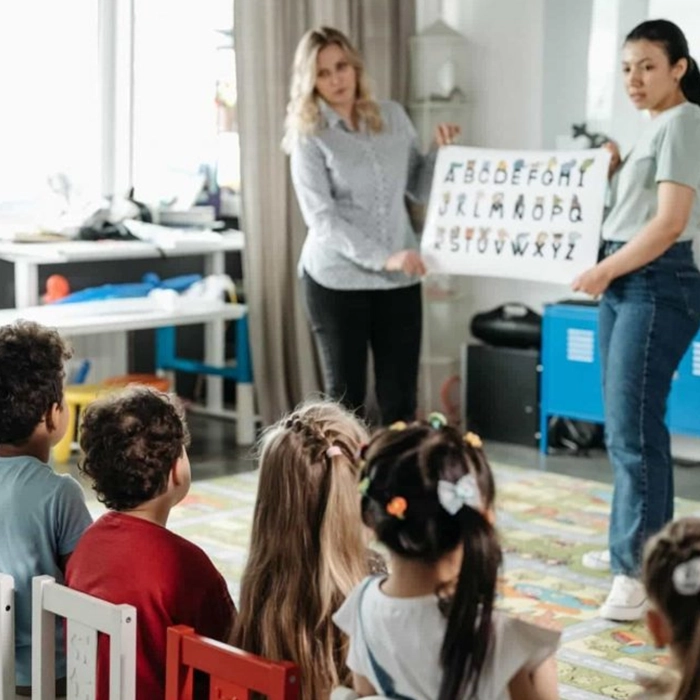
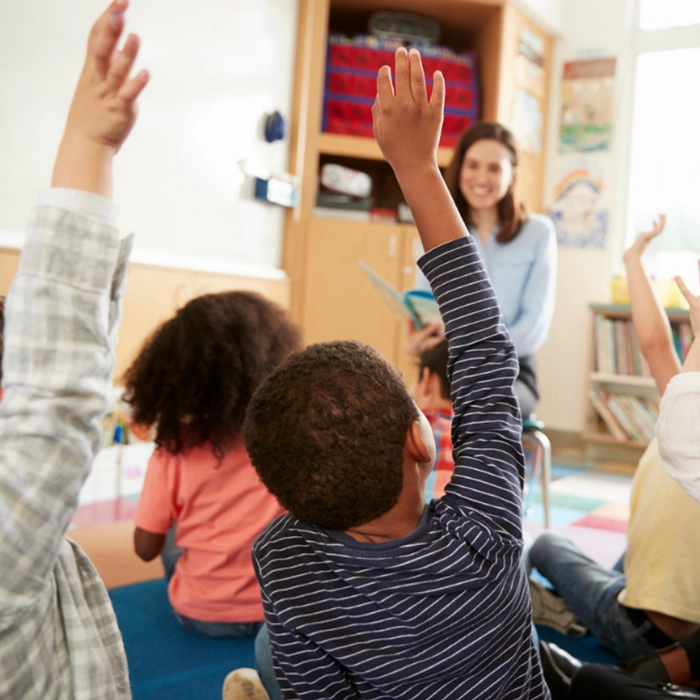

Age-Appropriate Responses to Encourage Good Behavior
Responding to children’s behavior in age-appropriate ways is vital for effective rule enforcement. Positive reinforcement, such as praise, stickers, or small rewards, encourages children to follow preschool classroom rules. Recognizing and celebrating good behavior helps children understand the benefits of following the rules and motivates them to continue doing so.
For instance, if a child follows the rule “Raise your hand to speak,” acknowledging their effort with a compliment or a reward reinforces the desired behavior. This positive reinforcement helps children associate following the rules with positive outcomes, making them more likely to adhere to them.
Additionally, gentle reminders and clear explanations are effective for addressing rule-breaking behavior. Instead of punitive measures, focus on teaching and guiding children to understand why the rules are essential. This approach helps children learn from their mistakes and encourages them to make better choices.
Involving Parents with Rule Enforcement
Involving parents in the rule enforcement process is beneficial for reinforcing preschool classroom rules. When parents are aware of the rules and support them at home, children receive consistent messages about the importance of following these guidelines. This consistency between home and school environments strengthens the children’s understanding and adherence to the rules.
Communicate with parents about the classroom rules and the reasons behind them. Regular updates, newsletters, and meetings can help keep parents informed and engaged. Encouraging parents to use similar rules and reinforcement strategies at home creates a cohesive approach to behavior management.
For example, if the rule “Clean up after yourself” is practiced at school and home, children learn to internalize this behavior as a standard expectation. Parental involvement reinforces the rules and helps build a collaborative relationship between teachers and families, supporting the children’s overall development.
Incorporating clear and consistent rules in your preschool classroom is essential. It ensures a safe and structured environment and promotes children’s learning outcomes and personal development. By setting up these rules, you are laying the foundation for a positive and productive learning experience.
Creating a nurturing and orderly environment with well-defined rules helps children develop the skills and confidence they need to succeed in school and life. These rules give children a sense of security and predictability, which are crucial for their emotional and social development. When children know what to expect, they are more likely to feel comfortable and confident in their surroundings, allowing them to focus on learning and exploring.
Furthermore, preschool classroom rules teach children important values such as respect, responsibility, and empathy. They learn to consider the impact of their actions on others, fostering a sense of community and cooperation. These social skills are essential for building positive relationships and navigating various social situations as they grow.
Consistently enforcing rules also helps children develop self-discipline and self-regulation. They learn to control their impulses, follow directions, and understand the consequences of their actions. These skills are foundational for academic success and well-being, preparing children for the challenges they will face in higher grades and beyond.
Involving parents in the rule-setting and enforcement process further strengthens the effectiveness of these guidelines. Children who receive consistent messages about the importance of following rules at school and home are likelier to internalize these behaviors. This collaborative approach creates a cohesive support system that enhances children’s learning and development.


Make Rule Review a Daily Habit
The most effective way to reinforce preschool classroom rules is to revisit them daily. This doesn’t need to take long—just 3 to 5 minutes during morning meeting or circle time is enough. You can:
- Pick one rule each day to focus on
- Ask children to demonstrate or act out the rule
- Use songs or hand signals to anchor memory
Children need reminders, not because they forget intentionally, but because they’re still learning to manage their actions and emotions.
Celebrate Small Wins
Reinforcement doesn’t need to be fancy. Verbal praise like, “I love how you used your walking feet!” has a significant impact. Some teachers use “shout-out” boards where they write children’s names and the rule they followed well that day.
You can also use class-wide rewards for group cooperation, like:
- Earning puzzle pieces that build a picture when the class follows rules
- Add cotton balls to a jar for each act of kindness or respect
The class gets a celebration when the jar is complete, like extra story time or outdoor play.
Send Rule Reports Home
Involving families in rule reinforcement helps children receive a consistent message. Simple daily or weekly “rule notes” can be sent home showing what rule the child followed well.
For example:
“This week, Maria showed great responsibility by cleaning up without reminders.”
This celebrates success and builds a connection between school and home.
Use Peer Modeling and Reflection
Children learn from each other. When one child models a rule well, highlight it:
“Did anyone notice how Liam waited patiently during snack time? That’s being respectful.”
Over time, you can also guide group reflection with questions like:
- “What rule helped us have a calm circle time today?”
- “What would make cleanup faster tomorrow?”
Preschool classroom rules become more powerful when children talk about them, not just hear them.
In summary, the thoughtful creation and consistent enforcement of preschool classroom rules play a vital role in shaping a positive educational experience. They provide a safe, structured environment where children can thrive, learn, and develop essential life skills. By prioritizing these rules, educators can ensure that every child has the opportunity to reach their full potential and succeed both academically and personally. Through this comprehensive approach, we can foster a generation of confident, respectful, and responsible individuals ready to take on the future.
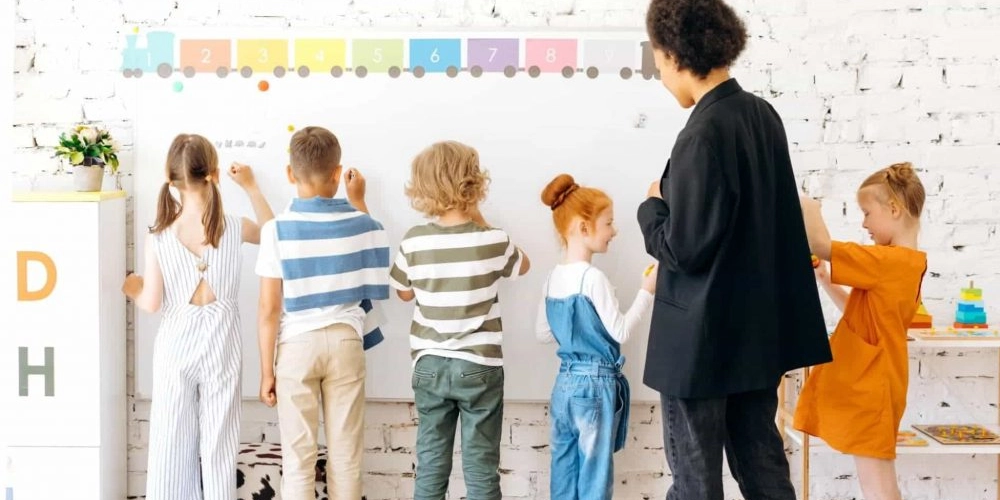
Montessori Classroom Rules for Preschool
Montessori classrooms take a unique approach to rules. Unlike traditional settings where teachers often state and enforce regulations, Montessori environments aim to help children develop self-discipline and internal motivation through structure, freedom within limits, and respect.
Guided Freedom, Not External Control
In a Montessori preschool, children are not told what to do at every moment. Instead, they are introduced to expectations gradually and through demonstration. For example, instead of saying, “Don’t run,” a Montessori teacher might stroll and say, “We move calmly in the classroom.”
Rules are shown, not just stated. This modeling method helps children internalize behavior rather than obey to avoid consequences.
Rules Rooted in Respect
Montessori rules are framed around three core values:
- Respect for self: Making safe, healthy choices; choosing meaningful work
- Respect for others: Waiting your turn, using quiet voices, not interrupting work
- Respect for the environment: Returning materials, cleaning up, moving carefully through space
These expectations are introduced through consistent routines and careful language. For example, children are taught to roll up a rug, place materials back in their tray, and push in their chairs after use. These are rules—but presented as norms of peaceful, respectful living.
Natural Consequences Instead of Punishment
Montessori education does not use reward charts or time-outs. Instead, it relies on natural consequences. If a child misuses a material, it is temporarily removed—not as a punishment, but because it’s not being used properly. If a child disrupts a group, they may be asked to observe rather than participate until they are ready to join respectfully.
This method helps children connect behavior with outcome directly and meaningfully.
The Teacher’s Role in Rule Modeling
Montessori teachers are often called “guides” for a reason. They observe more than they direct, step in gently, and use precise, respectful language to correct behavior.
Instead of commands, they might ask:
- “What is your plan for using this material?”
- “Do you remember what we do after we finish work?”
This fosters independence and reflection—key elements of Montessori rule-following.
Blending Montessori with Traditional Preschool Rules
For classrooms that use a mixed method or are transitioning toward Montessori, it’s possible to blend approaches. For example:
- Use Montessori-style respectful phrasing in traditional rule charts
- Introduce natural consequences alongside structured routines
- Use peer modeling rather than extrinsic reward systems
The heart of Montessori classroom rules is building a culture of calm, choice, and care, not controlling behavior. By respecting the child’s capability and pace, Montessori rules empower preschoolers to develop lifelong habits of responsibility and empathy.
Montessori vs. Traditional Preschool Classroom Rules
| Aspect | Montessori Approach | Traditional Approach |
|---|---|---|
| Rule Source | Emerges from classroom norms and child-led practice | Teacher-created, often posted as a list |
| Language Style | Indirect, reflective (e.g., “What do we do after work?”) | Direct instructions (e.g., “Clean up your area”) |
| Behavior Management | Focus on natural consequences and self-regulation | Use of external reinforcement (e.g., time-outs, reward charts) |
| Teacher Role | Guide and observer, steps in with subtle prompts | Authority figure, sets and enforces rules directly |
| Tools for Reinforcement | Routines, modeling, quiet redirection | Posters, songs, group reminders |
| Student Involvement | Maintain order, support cooperation, and learning | Varies; students are expected to follow external instructions |
| Goal of Rules | Develop independence, empathy, and responsibility | Maintain order, support cooperation and learning |
Conclusion
Preschool classroom rules are more than behavior guidelines—they build a safe, respectful, and thriving learning environment. When rules are thoughtfully created, taught with patience, and reinforced consistently, they help children develop habits and values that support academic success and social growth.
This process is most effective when it involves teachers who guide with care, children who feel heard and respected, and families who support those expectations at home. Whether you follow a traditional structure, a Montessori approach, or a blend of both, the goal remains to help children grow into confident, kind, and responsible individuals.
Clear, consistent, and developmentally appropriate preschool classroom rules set the foundation for lifelong learning. With the right tools, language, and mindset, rules stop feeling like limits and become the framework for independence and connection.
FAQs
What are the most critical preschool classroom rules?
The most important rules are often the simplest. Common examples include “Be safe,” “Be kind,” “Listen to the teacher,” and “Take care of our things.” These rules cover behavior, social interaction, and responsibility. The key is to keep regulations short, positive, and easy for young children to remember.
How many rules should a preschool classroom have?
Most classrooms find that 3 to 5 rules are ideal. Too many rules can overwhelm children, especially at a young age. Fewer rules—framed positively and reinforced daily—are more likely to be remembered and followed.
What’s the difference between rules and expectations in preschool?
Rules are usually written, visual, and specific, like “Use walking feet.” Expectations are broader and more flexible, such as “Be respectful.” Preschool teachers often use both to guide behavior: rules for clarity and expectations for culture-building.
How do you introduce preschool classroom rules at the start of the year?
Start with class discussions, modeling, and visual supports like posters or stories. Introduce one rule daily during the first week, practice it in real situations, and revisit it often. Having children help create or decorate the rules also builds ownership.
How can parents support classroom rules at home?
Teachers can share the classroom rules list with parents and explain how the rules are taught. Parents can use the same language at home—like “gentle hands” or “listening ears”—and reinforce good behavior with praise or routines. Consistency between home and school builds trust and helps children follow the rules more naturally.
Are Montessori classroom rules too loose compared to traditional preschools?
Not at all. Montessori rules may appear less formal but are deeply rooted in structure, consistency, and respect. Instead of being imposed, rules are modeled and practiced, helping children internalize values and regulate themselves. The approach is different, but the goal—safe, responsible behavior—is the same.



